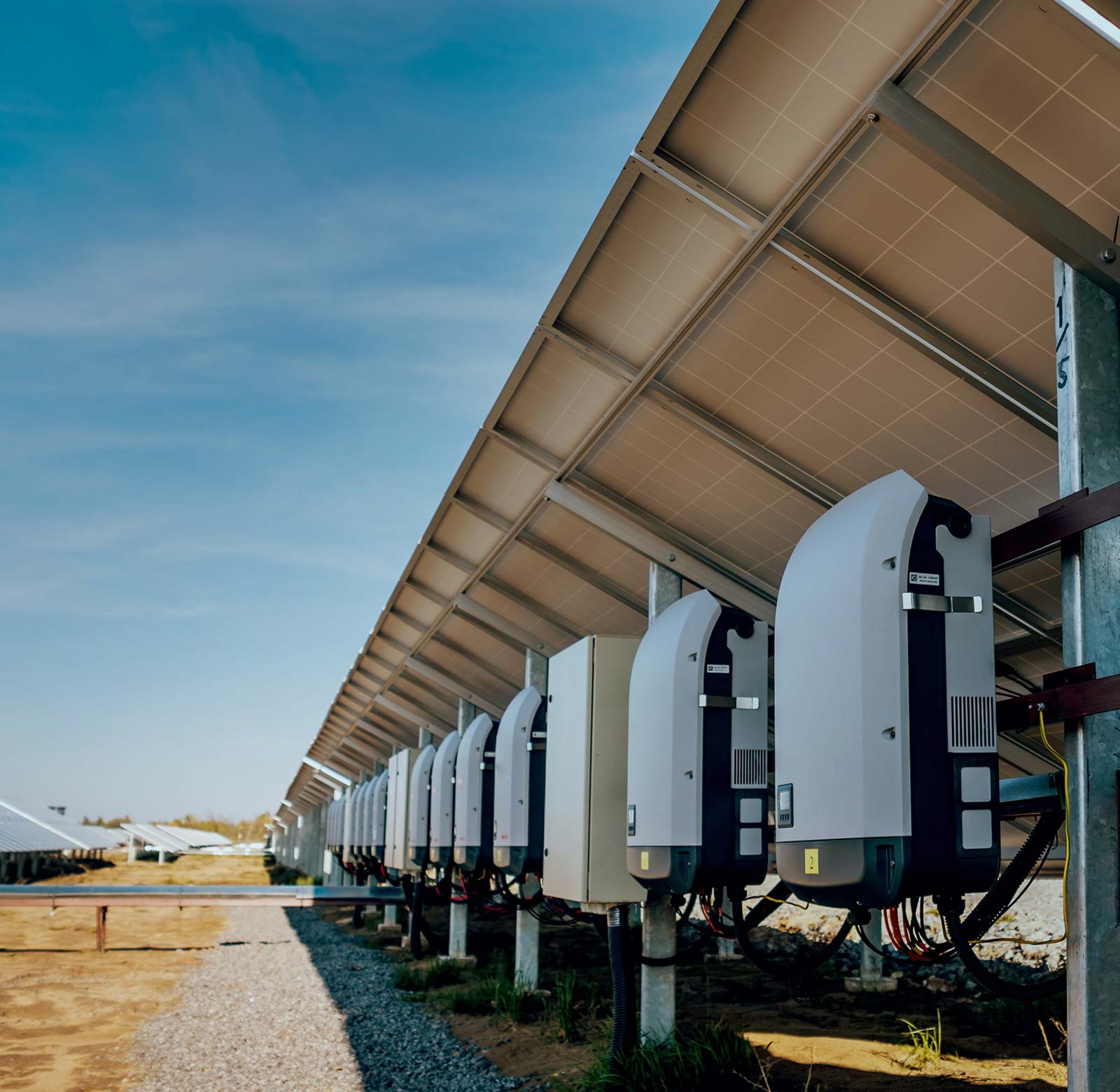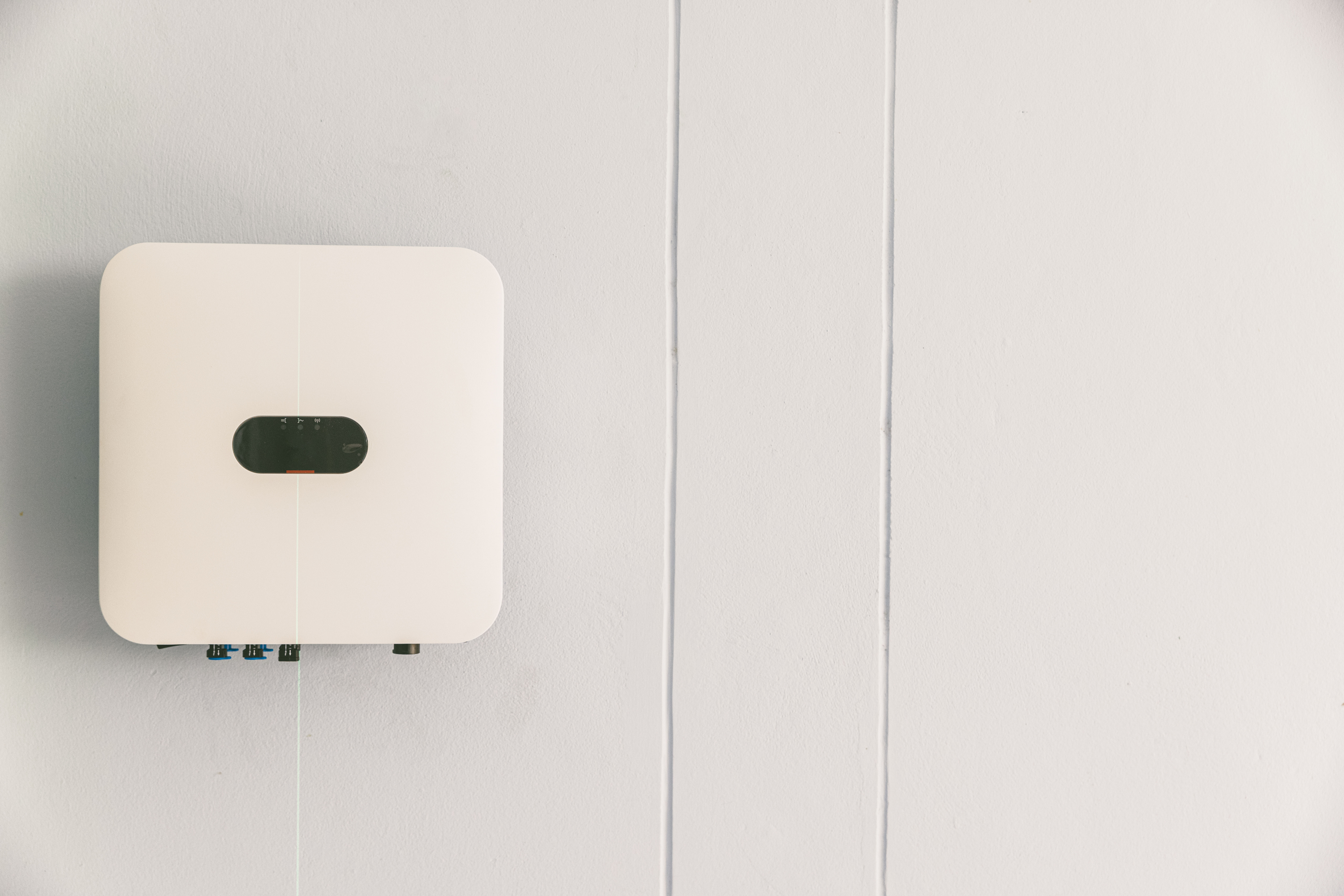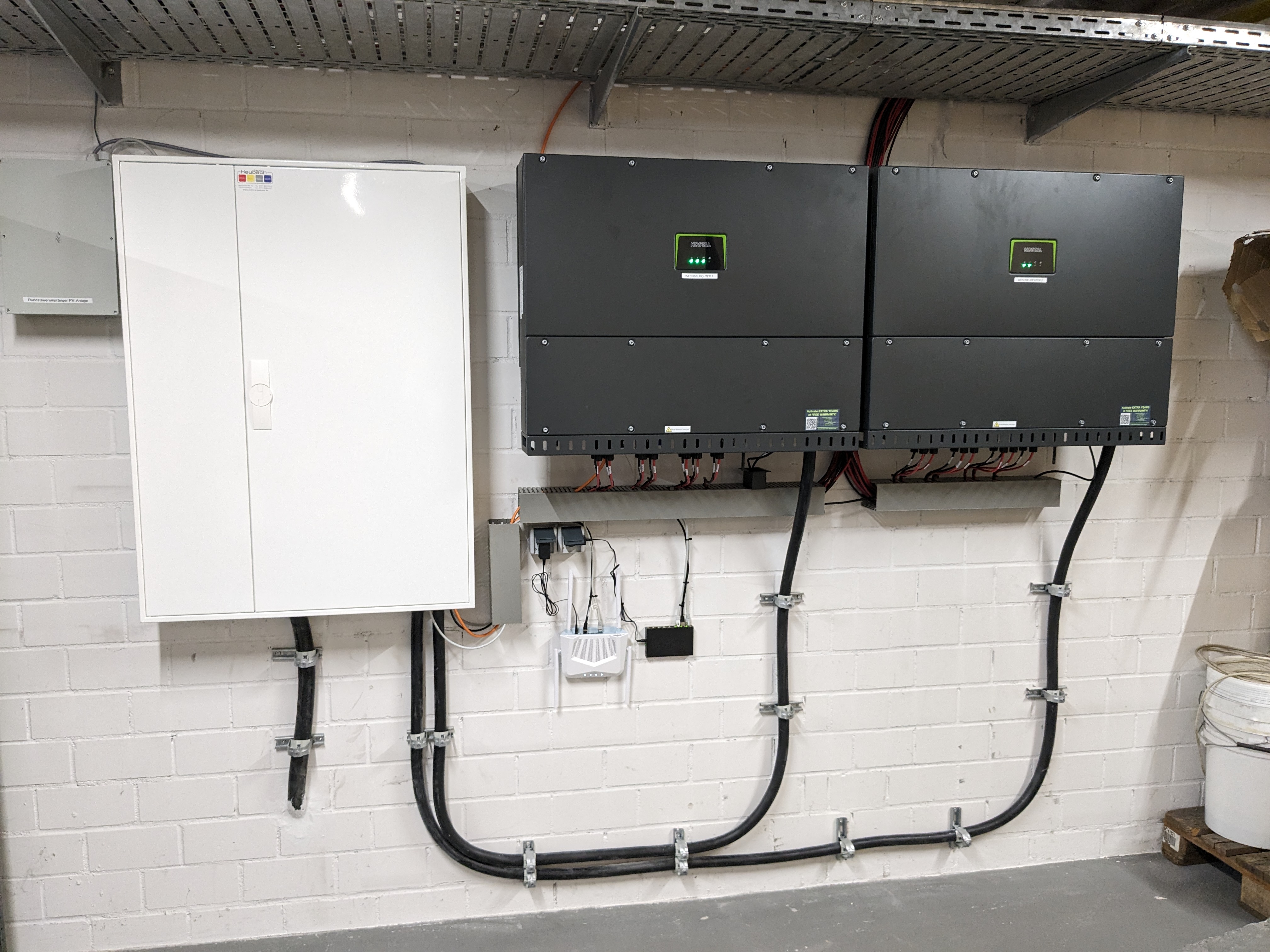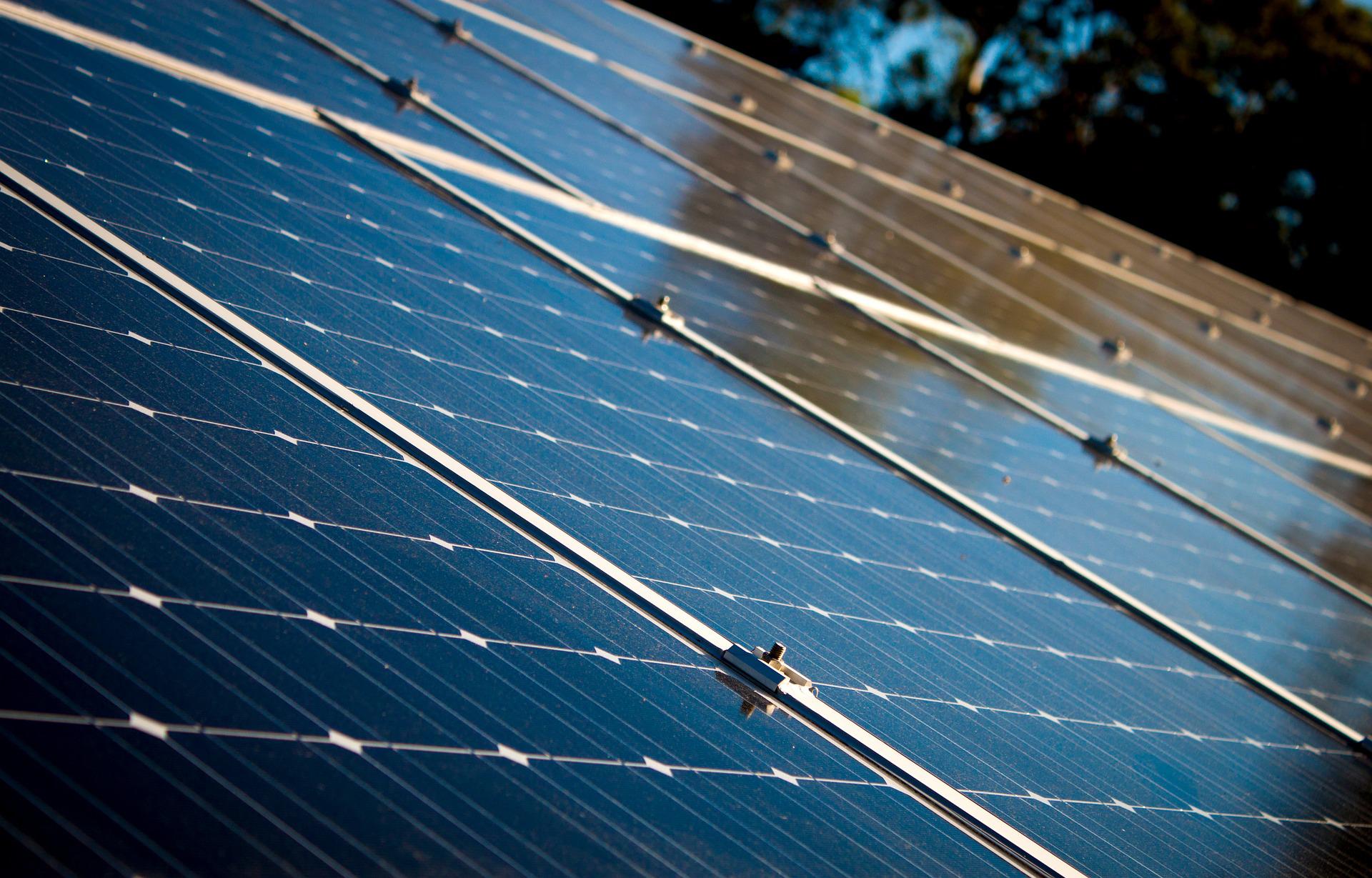Interface to the Grid
In order to feed the direct current (DC) generated by the PV-modules into the public grid, DC has to be converted to alternating current (AC). This is done by the inverter. Depending on the system setup, it also acts as a central distribution node for the solar power. Our inverters are supplied by well-known and established manufacturers. Contact us, we will be glad to give you more information.
Everything in hand.
POWER
CONTROL.
Your PV system is more than a simple generator of electricity! With an energy management system, you can precisely control the energy flow in your home and use the electricity exactly where it is currently needed. Take a closer look at our management systems.
Knowledge
Inverters
Why do I need an inverter and what's inside the box? Let us explain it in more detail.




